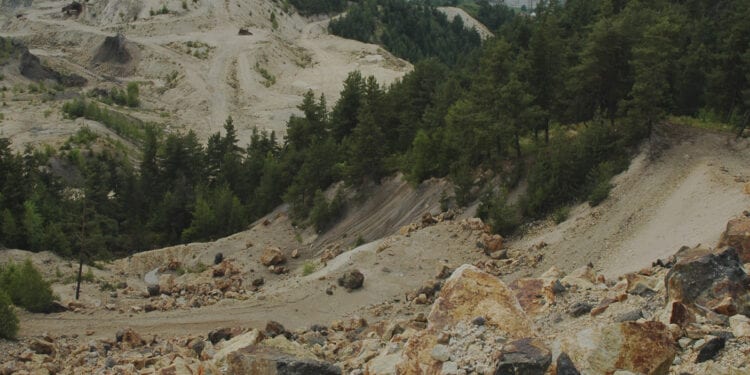Ramps Up Underground Mining Rate In Montana
Winston Gold Corp.(CSE:WGC) (OTCQB:WGMCF) has produced its first concentrate from low-grade stockpiles at the Paradine Mill Facility, near Radersburg, Montana, USA.
CEO, Murray Nye, said at the same time the company’s underground development work at its wholly-owned Winston Gold Mine, near Helena, Montana. has allowed mining operations to increase to a rate of 120 tpd, or 3,000 tons per month.
During January, the Paradine mill facility was run continuously over a period of six days. The mill hired and trained five new employees and rotated two, three-man crews, to work 12 hour shifts during this period. A total of 752.47 tons of low-grade mineralized material was processed with an average head grade of 0.05 oz per ton (opt) gold (1.75 g/t gold) and 0.78 opt silver (26.85 g/t silver). The mill produced 7.43 tons of concentrate (wet) with an average grade of 1.73 opt gold (59.42 g/t Au) and 30.52 opt silver (1,046.43 g/t Ag).
The mill also recovered 1,050 lbs of gravity concentrate with an average grade of 6.76 opt gold (231.77 g/t Au) and 14.81 opt silver (507.91 g/t Ag). Detailed results of the Mill’s test-run can be viewed in the table below.
“In just less than six months our team has managed to rehabilitate and update the Paradine Mill Facility to a stage where we can now produce concentrate,” Mr Nye said.
“The Crusher, Ball mill and Knelson concentrator have already seen huge improvements in efficiency. During this initial ‘bedding-in’ process we continue to use lower-grade mineralisation from the mine-site to optimise the mill circuits and processes.”
Future upgrades at the Paradine Mill Facility also include, a soon to be operational Wilfley Table, which will enable fine particles to be processed to improve overall gold and silver recoveries from the gravity circuit. In addition, construction of Settling Pond #2 has begun, and the foundation work is about one third complete.
The last significant upgrade to be installed at the Mill is a filter press. It will eliminate the labor-intensive process of recovering flotation concentrates from the leaf filter and improve safety. Once the filter press is operational, Winston plans to run the Paradine Mill 24 hours a day, 6 days a week to process the high-grade stockpile from the Winston Gold Mine.
“Barring any unforeseen issues, I believe the company will be mining and milling high grade gold and silver from the Custer and Parallel veins at a rate of 150 tpd by May 2021,” Mr Nye added.
Winston has been developing what is referred to as an I-drift above the 4637 level along a 200 ft section the Custer West vein. The I-drift represents the first phase of the stoping process which allows the miners to increase the mining rate. Two headings have been mining the mineralised Custer West vein system at opposite sides at a combined rate of 90 tons per day. A secondary I-drift is now being developed along the Parallel West Vein system. This will bring the total daily mining rate to 120 tons. Once the I-drifts are completed back-stoping will commence to access higher levels of both vein systems.
In accordance with mining safety laws, Winston Gold has also been developing a raise to be used as a secondary escapeway from its current underground workings. The raise was collared on the 4637 ft level and will break into the historic Edna workings 167 ft. (51 metres) above.
“Since the Edna workings require only minor rehabilitation, they provide us with a safe and efficient breakthrough point for the escapeway and ventilation raise,” Mr Nye said.
The raise will be permanently timbered, and have safety landings along the ladders, in accordance with MSHA (Mine Safety and Health Administration) standards since the raise is only five degrees off the vertical.
The Paradine mill located just 56 km by paved road from the company’s wholly-owned Winston Gold project. The Mill has a nameplate capacity of 150 tons per day and hosts a ball milling circuit as well as both a gravity and flotation circuit. A new lined settling pond has been constructed for tailings disposal with a 35,000-ton capacity and two additional ponds are also being built.












